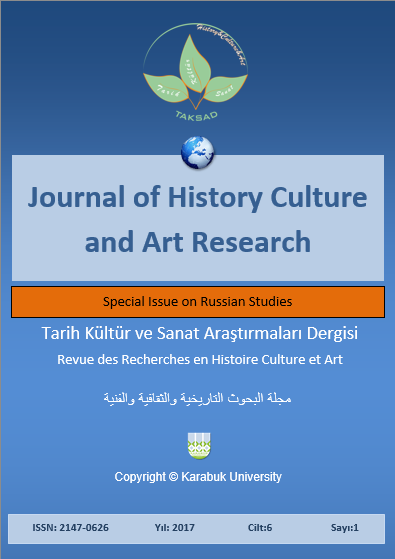Frequency of Verbal Forms and Language Standard
DOI:
https://doi.org/10.7596/taksad.v6i5.1250Keywords:
Verb, Paradigm, Ngram, Google books, Statistics, Norm.Abstract
The article offers the description of a modern experiment, which gives the possibility of complex information extraction about the cognitive structure of the linguistic evolution of Language Standart (Norm). The study was conducted using the Google Books Corpus, which provides unprecedented opportunities for linguistic studies. The purpose of the experiment was to identify the patterns of competing forms evolution within the center of the verbal paradigm (3Sg and 3Pl) on the basis of the data concerning the frequency of their use. The study was conducted on the material of excess verb forms with the variability of a/o vowels in a root (обусловливать/обуславливать). The graphs for variable word form competition clearly illustrate that the process of norm change consists of stages, each of which has numerical characteristics of two competing word form use. The chronological frameworks for an inflectional model change are established with the accuracy of up to 10 years. The graphs obtained as the result of the experiment make it possible to conclude that almost half of the verbs were not variative, although they previously considered. During the discussion of the obtained empirical data, a conclusion is made about the morphemic structure of a word, in which a root vowel changes. Possessing the information about similar processes in other verb paradigms, researchers are able to predict a possible change of inflectional models in the future and, as a consequence, the fixing of a new norm in lexicographical, orthographic and orthoepic sources.
References
Carroll, R.; Svare, R. & Salmons, J. (2012). Quantifying the evolutionary dynamics of German verbs. Journal of Historical Linguistics, 2(2), 153-172.
Galeev, T. I. & Solovyev, V. D. (2016). Methods of application of modern text corpora in the study of the morphological system of Russian verbs unification of I productive (irregular) class of verbs. Quantitative model based on google books. Modern Journal of Language Teaching Methods, 177-180.
Gorbachevich, K. S. (2009). Variability of the word and language norm: On the basis of modern Russian language. Moscow: LIBROKOM.
Graudina, L. K. (2004). Grammatical correctness of Russian speech. Stylistic dictionary of variants. Moscow: Astrel.
Lieberman, E.; Michel, J. B.; Jackson, J.; Tang, T. & Nowak, M.A. (2007). Quantifying the evolutionary dynamics of language. Nature, 449, 723-716.
Piperski, A. Ch. (2014). Alternation in the root as a pledge of sustainability: from the history of the strong verbs in German language. Acta Linguistica. Proceedings of Institute for linguistic Studies, 10(1), 821-831, Petersburg: Science.
Solovyev, V. D. & Kibrik, A. A. (2015). How can computer technologies help linguistic typology? Herald of the Russian Academy of Sciences, 85(1), 33-39.
Varlamova, M.; Palekha, E. & Miftakhova, A. (2014). Visual listening in theory and practice of effective foreign language teaching. INTED2014 Proceedings. 8th International Technology, Education and Development Conference, March 10th-12th, 2014, Valencia, Spain.
Zagidulina, A. F.; Gilazetdinova, G. Kh. & Islamova, E. A. (2016). Associative fields of lexemes "Homeland" and "Vatan" in Russian and Tatar linguistic consciousness. Journal of Language and Literature, 7(2), 289-292.
Downloads
Published
How to Cite
Issue
Section
License
All papers licensed under Creative Commons 4.0 CC-BY.- Share — copy and redistribute the material in any medium or format
- Adapt — remix, transform, and build upon the material for any purpose, even commercially.
Under the following terms:
Attribution — You must give appropriate credit, provide a link to the license, and indicate if changes were made. You may do so in any reasonable manner, but not in any way that suggests the licensor endorses you or your use.
- No additional restrictions — You may not apply legal terms or technological measures that legally restrict others from doing anything the license permits.







